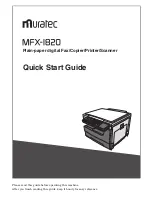
PJL
3-8
DEFAULT Command
This command modifies the default setting for the specified environment variable and
stores the setting in the printer NVRAM. The new setting is activated with the
occurrence of the next PJL reset condition.
Syntax:
@PJL DEFAULT [command modifier:
value
] variable=
value
[<CR>]<LF>
[command modifier:
value
]
The
[command modifier:
value
]
parameter specifies the type of PJL variables
to be modified. The variables supported are listed in the tables beginning on
page 3-12.
•
A
[command modifier:
value
]
parameter is not required for variables listed in
the tables “Common Variables for Both Printer Languages” on page 3-12,
and “Printer Unique Variables for Both Printer Languages” on page 3-19.
•
LPARM:
PCL
is used with variables specific to PCL emulation. (See the tables
“Common Variables for PCL Emulation” on page 3-40, and “Printer Unique
Variables for PCL Emulation” on page 3-41.)
•
LPARM:
POSTSCRIPT
is used for variables specific to PostScript emulation. (See
the tables “Common Variables for PostScript Emulation” on page 3-43, and
“Printer Unique Variables for PostScript Emulation” on page 3-44.)
•
LRESOURCE:
"
device:filename.filetype
" is required for LRESOURCE
variables. (See the table “Printer Unique LRESOURCE Variables” on
page 3-45.)
Values for "
device:filename.filetype
" are:
device
flash
,
flash1
,
disk
, or
disk1
(case insensitive)
filename
A unique identifier for a file, such as the macro ID for a PCL
macro, the symbol set ID for a PCL symbol set, the font ID
for a PCL font, and so on. The
filename
is case sensitive.
filetype
An identifier that categorizes the file, such as
p5macro
for
PCL macros or
p5symset
for PCL symbol sets. See
“Table 3-22: Variables for Flash and Disk File and Password
Commands” on page 3-79 for a complete list of the
supported file types. The
filetype
is case sensitive.
















































